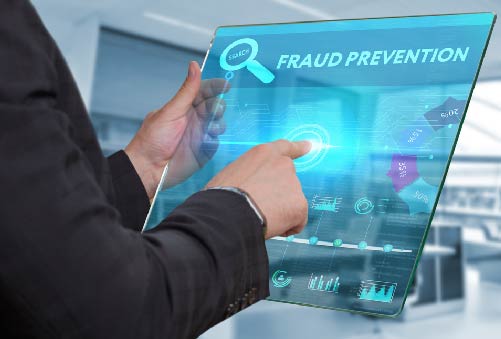AFP: 66% of All Fraud Originates from Paper Checks
- In a digital world, check fraud still leads the pack
- There are common "ingredients" to each fraud "recipe"
- Consumers can protect themselves
Joshua Riggins, president of Farmers and Mechanics Federal Savings Bank, makes no bones about it in an article for the Greene County Daily World: Even in the rapidly expanding world of digital finances, check fraud is still threat to be taken seriously.
In a digital age concerned with technology and cybersecurity, there is no more prevalent fraud than that of paper checks. The Association for Financial Professionals (AFP) presents data annually regarding payment fraud. In 2020 their report showed 66 percent of all fraud originating from paper checks. (AFP “2021 AFP Payments Fraud and Control Survey Report.”)

Common Denominators
Some advice Riggins gives to consumers includes pointing out the two elements of almost all check fraud plots:
- Someone you do not know
- That someone asking for money to be sent to someone else
Of course, there is the tried and true "overpayment" scam, where the target is sent a check for more than what was agreed upon. The target is asked to send back to the fraudster the overpayment after a couple days and the check has "cleared." Ultimately, the bank can and will determine the check is a fraud, and the target is libel for the amount missing.

Check Fraud is Relatively Quick and Easy
As Riggins notes, check fraud works because it is so easy to fake a check, the payoff is quick, and the schemes are difficult to track.
Riggins notes that the Federal Trade Commission recommends the following to avoid becoming a victim:
- Be wary. Feel free to contact your bank first before you accept a check.
- Never take a check for more than your selling price.
- When selling online, consider using an escrow or online payment service.
- Never send money back to someone who sent you a check.

Riggin also points out an issue that many in the banking are all too familiar with: funds availability.
“By law, banks have to make deposited funds available quickly, usually within two days. Fake checks can take weeks to be discovered and untangled.”
Fraudsters are aware of funds availability and take advantage of this law. This puts a spotlight on a need for real-time or at least near real-time check fraud detection.
Awareness Combined with Technology
Check fraud is not going away in the near future, so it's wise to stay abreast of the latest scams and share information and tips with consumers such as the FTC's “How to Spot, Avoid, and Report Fake Check Scams.”
However, as we have noted before, awareness is only part of the solution to helping stop fraudsters in their tracks. Banks of all of sizes need to prioritize modernizing their platforms, from large financial institutions to community banks and credit unions.

Those banks who are investing in technologies like image-analysis with forensic AI are able to achieve prevention rates of over 95% on targeted use cases. Furthermore, these banks are able to "tout" their fraud-prevention capabilities to their customer base, providing additional assurance to customers that their funds are safe.